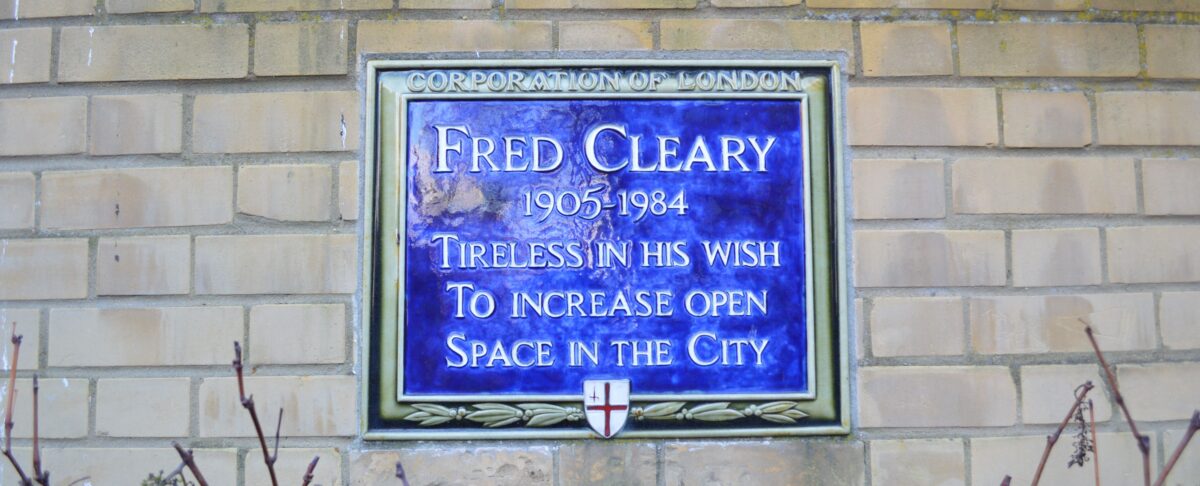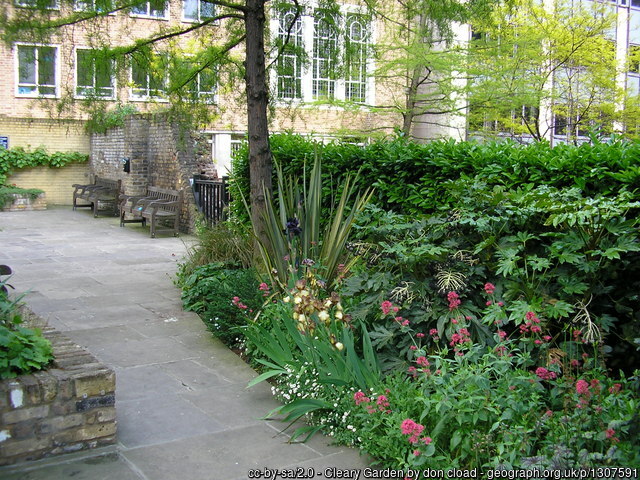
With so much noise and traffic in the City it’s sometimes nice to take a bit of time out. And that’s what places like Cleary Gardens attempt to provide – a little spot of tranquility among the roar and bustle of the Square Mile.
There are over 200 open spaces within the City, managed by the City Gardens Team, and the Corporation also owns huge areas of open space outside central London – Epping Forest for example, Hampstead Heath, Ashtead, Kenley and Coulsdon commons. The City of London principally funds these spaces through its ‘City Cash’ funds, with other revenue coming from donations, sponsorship and visitors.
And they’re not just for people of course. The City’s open spaces are planted to encourage bio-diversity, insects and birds. Blue tits and sparrows nest in the buddleia of Cleary Gardens, with greenfinches, robins and blackbirds being other frequent visitors.
Cleary Gardens came about because of the Blitz, when the buildings that had stood on the site were flattened by German bombing. A City worker called Joseph Brandis took it into his head to turn this particular bomb site into a garden, taking mud from the river and bringing plants and soil from his own garden in Walthamstow. Such was his success that in 1949 Queen Elizabeth (the mother of the present queen) visited Joe’s garden.
What we see now isn’t what was there in 1949. The garden was extensively relandscaped in the 1980s when it was renamed Cleary Gardens. Cleary was Chairman of the Metropolitan Public Gardens Association and had been instrumental in encouraging the planting of trees and the creation of new gardens in the City – in fact his nickname was ‘Flowering Fred’.
The garden is now terraced on three levels, which means of course that it cuts through the history of the City, from modern London at the top, through the medieval layers, to the level of the Roman city at the bottom. And it was here that in 1964 the remains of a Roman bath house were found. It’s thought that these bath houses were also built on terraces dug into the hillside and fed by spring water.
In 2007 the garden was remodelled again, with vines planted along the top wall (there were tiny bunches of grapes growing there in the first week of September). These were a gift from the winemakers of the Loire Valley, and it gives an echo of the time when the area was home to wine merchants – it still falls within the Ward of Vintry and is a stone’s throw from the Vintners’ Hall.



With lockdown our open spaces, parks commons etc have been crucial. This is something you might want to highlight.
Here in Battersea we unveiled a Battersea Society plaque at the Brighton Yard entrance to Clapham Junction Station to John Buckmaster who was instrumental in getting the Wandsworth Common Act passed 150 years ago to save it from further encroachment and selling of by Earl Spencer the Lord of the Manor. One of the signatories to the petition was Robert Hunter who was one of the three co-founders of the National Trust whose plaque was unveiled nearby at 5 Louvaine Road in 2020.
Thanks Jeanne – I’m local to Wandsworth Common and was looking for the Buckmaster plaque the other day; I hadn’t realised it was at the station! I might try and do a post on that in the next few weeks.